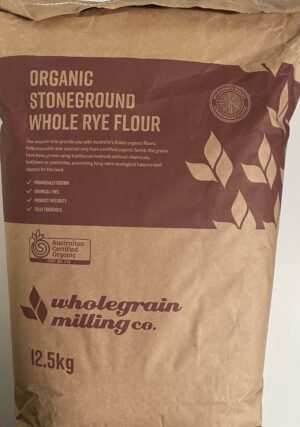Sourdough versus regular bread is a debate that encompasses taste, texture, nutritional value, and preparation methods.
Sourdough bread is made using a naturally occurring yeast and lactic acid bacteria culture, giving it a distinctive tangy flavor and chewy texture.
Regular bread, often referred to as commercial bread, is made with commercially produced baker’s yeast, leading to a quicker rise and a softer, uniform texture. While both have their place in the world of baking, their differences extend beyond just taste and texture.
Caputo Gluten-Free Pizza: The Recipe for a Healthy and Delicious Pizza.
Table of Content
Fermentation Process and Flavor
One of the key differences between sourdough and regular bread is the fermentation process. Sourdough bread undergoes a longer fermentation process, often lasting anywhere from several hours to days.
This slow fermentation, pivotal in the sourdough versus regular bread comparison, allows for the development of a complex flavor profile and a tangy acidity, which is a signature characteristic of sourdough. Regular bread, in contrast, is typically prepared using a faster fermentation process, resulting in a milder flavor and softer texture.
The extended fermentation of sourdough not only contributes to its unique sour taste but also affects its nutritional aspects.
Nutritional Value and Digestibility
When considering sourdough versus regular bread, the nutritional aspect is significant. Sourdough fermentation can break down phytates, which increases the availability of nutrients and makes it easier to digest.
This process also reduces the bread’s glycemic index, making it a better option for blood sugar management.
Regular bread, especially when made from refined flour, can be higher in phytates and have a higher glycemic index. Additionally, the natural fermentation in sourdough can degrade gluten to some extent, potentially making it more tolerable for people with gluten sensitivities (but not suitable for those with celiac disease).
Thus, sourdough is often recommended for its enhanced nutritional benefits and digestibility.
Texture and Shelf Life
In the sourdough versus regular bread debate, texture and shelf life play a crucial role. Sourdough generally boasts a denser texture and a chewier crust, thanks to its unique fermentation process and higher hydration levels.
Regular bread is usually softer and has a more uniform crumb. Furthermore, the natural acids produced in sourdough act as preservatives, which can extend its shelf life compared to regular bread.
This aspect of sourdough not only makes it a more practical choice for many but also adds to its appeal as a bread that retains its quality for longer.
Sourdough versus regular bread is a comparison that highlights the unique qualities of each. From the complex flavors and improved nutritional profile of sourdough to the soft texture and quick preparation of regular bread, each has its own merits.
However, for those seeking a more nutritious option with a distinctive taste and longer shelf life, sourdough is often the recommended choice. Its artisanal quality and health benefits make it not just a bread, but an experience worth savoring.






